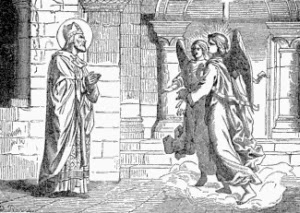Some of the Alleged “Messages” from Medjugorje:
“All religions are equal before God," says the Virgin.
(Chronological Corpus of Medjugorje, p. 317)
"I do not dispose of all graces...Jesus prefers that you address your petitions directly to him, rather than through an intermediary." (Chronological Corpus of Medjugorje, p.181, 277-278)
"God directs all denominations as a king directs his subjects, through the medium of his ministers" ("The Apparitions at Medjugorje," by Fr. Svat Kraljevic, 1984, p.58)
"It is you who are divided on this earth. The Muslims and the Orthodox, like the Catholics, are equal before my Son and before me, for you are all my children." (Fr. Ljubic, p.71)
“The Madonna said that religious are separated in the earth, but the people of all religions are accepted by her Son.” Ivanka Ivankovic (The Apparitions of Our Lady of Medjugorje, Francisco Herald Press, 1984)
Question: “Is the Blessed Mother calling all people to be Catholic?” Answer: “No. The Blessed Mother says all religions are dear to her and her Son.” Vicka Ivankovic. (The Visions of the Blessed Mother at Medjugorje, St. Martin's Press, August 1992)
"I do not dispose of all graces...Jesus prefers that you address your petitions directly to him, rather than through an intermediary." (Chronological Corpus of Medjugorje, p.181, 277-278)
"God directs all denominations as a king directs his subjects, through the medium of his ministers" ("The Apparitions at Medjugorje," by Fr. Svat Kraljevic, 1984, p.58)
"It is you who are divided on this earth. The Muslims and the Orthodox, like the Catholics, are equal before my Son and before me, for you are all my children." (Fr. Ljubic, p.71)
“The Madonna said that religious are separated in the earth, but the people of all religions are accepted by her Son.” Ivanka Ivankovic (The Apparitions of Our Lady of Medjugorje, Francisco Herald Press, 1984)
Question: “Is the Blessed Mother calling all people to be Catholic?” Answer: “No. The Blessed Mother says all religions are dear to her and her Son.” Vicka Ivankovic. (The Visions of the Blessed Mother at Medjugorje, St. Martin's Press, August 1992)
The Unending, unalterable teaching of the Holy Church of
Jesus Christ:
Pope Innocent III:
"There is but one universal Church of the faithful, outside which no one
at all is saved." (Fourth Lateran Council, 1215.)
Pope Boniface VIII: "We declare, say, define, and pronounce that it is absolutely necessary for the salvation of every human creature to be subject to the Roman Pontiff." (Unam Sanctam, 1302.)
Pope Eugene IV: "The most Holy Roman Church firmly believes, professes and preaches that none of those existing outside the Catholic Church, not only pagans, but also Jews and heretics and schismatics, can have a share in life eternal; but that they will go into the eternal fire which was prepared for the devil and his angels, unless before death they are joined with Her; and that so important is the unity of this ecclesiastical body that only those remaining within this unity can profit by the sacraments of the Church unto salvation, and they alone can receive an eternal recompense for their fasts, their almsgivings, their other works of Christian piety and the duties of a Christian soldier. No one, let his almsgiving be as great as it may, no one, even if he pour out his blood for the Name of Christ, can be saved, unless he remain within the bosom and the unity of the Catholic Church." (Cantate Domino, 1441.)
Pope Boniface VIII: "We declare, say, define, and pronounce that it is absolutely necessary for the salvation of every human creature to be subject to the Roman Pontiff." (Unam Sanctam, 1302.)
Pope Eugene IV: "The most Holy Roman Church firmly believes, professes and preaches that none of those existing outside the Catholic Church, not only pagans, but also Jews and heretics and schismatics, can have a share in life eternal; but that they will go into the eternal fire which was prepared for the devil and his angels, unless before death they are joined with Her; and that so important is the unity of this ecclesiastical body that only those remaining within this unity can profit by the sacraments of the Church unto salvation, and they alone can receive an eternal recompense for their fasts, their almsgivings, their other works of Christian piety and the duties of a Christian soldier. No one, let his almsgiving be as great as it may, no one, even if he pour out his blood for the Name of Christ, can be saved, unless he remain within the bosom and the unity of the Catholic Church." (Cantate Domino, 1441.)
All peoples are called to the Catholic Faith, outside of which no one can be saved. This is a revealed fact from God.



















